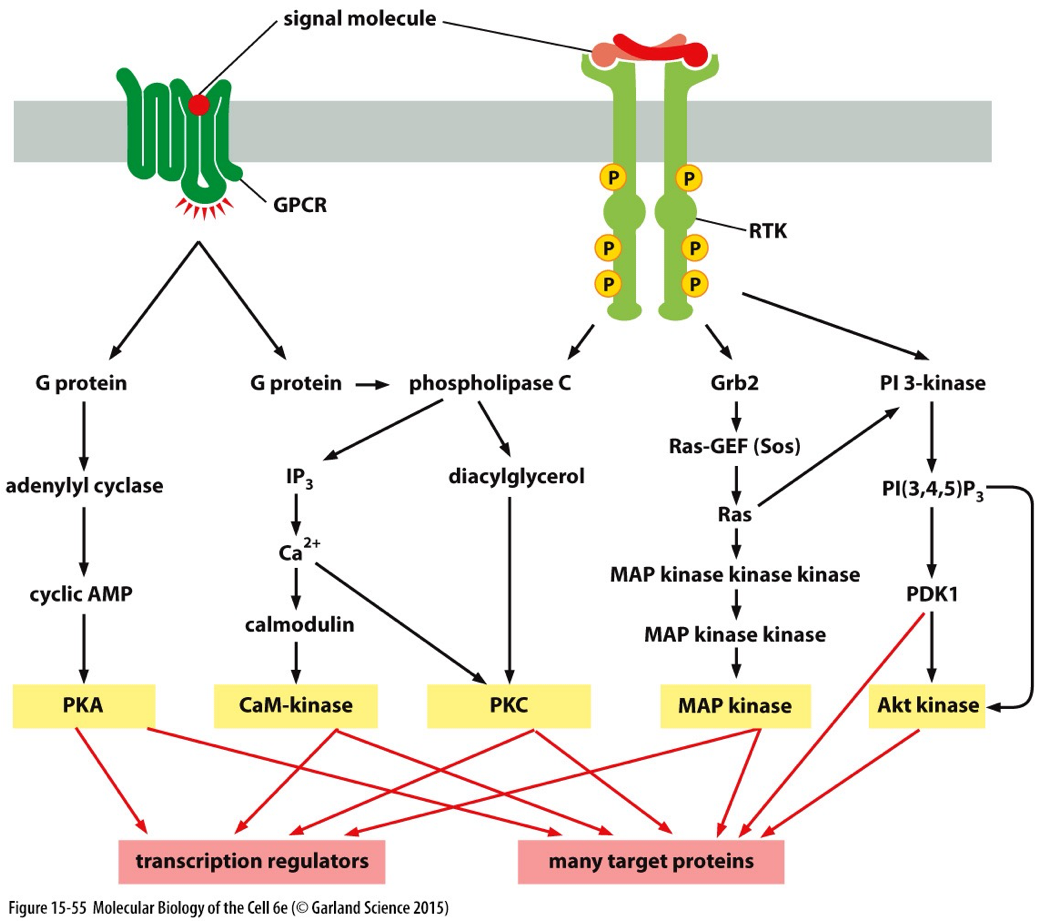Exam 2 Molec and Cell (3) JAK STAT/PI3K PLC
1/20
There's no tags or description
Looks like no tags are added yet.
Name | Mastery | Learn | Test | Matching | Spaced |
|---|
No study sessions yet.
21 Terms
JAK-STAT Signaling
-Enzyme couple receptor
-Receptor is stably associated with tyrosine kinases (JAK)
-STATS- latent transcription regulators → phosphorylated by JAK
-Immune cell maturation and response
-Cytokines-proteins produced by blood cells
Importance of JAK/STAT
regulated immune response, cell growth, and differentiation.
Epo
cytokine that regulated the production of red blood cells. It is produced in the kidneys and is released into the blood stream when oxygen levels are low.

JAK/STAT molecules
signaling molecules: JAK, STAT
Important for immune cell maturation and response: signal cytokines
Important for cell growth and signaling: signal growth hormone
JAKS
-JAK1 → IL-6 family cytokines
-JAK2 → Epo-R, GH-R
-JAK3 → IL-2 R y-chain
-Tyk2
STATS
STAT1-4, 5a, 5b, 6
JAK/STAT pathway
cytokine or growth factor binds to the receptor and triggers receptor clustering and conformational changes'
receptor activation leads to JAK activation. JAKs phosphorylated tyrosine residues on the receptor, creating docking sites for other molecules
phosphorylated tyrosine residues on the receptor serve as binding sites for STAT proteins and STAT binds to the receptor
STAT is phosphorylated by JAK and results in the dimerization of two STAT molecules. STAT dimers expose nuclear localization signals, allowing them to translocate to the cell nucleus
STAT binds to the DNA sequence of SREs and activates transcription
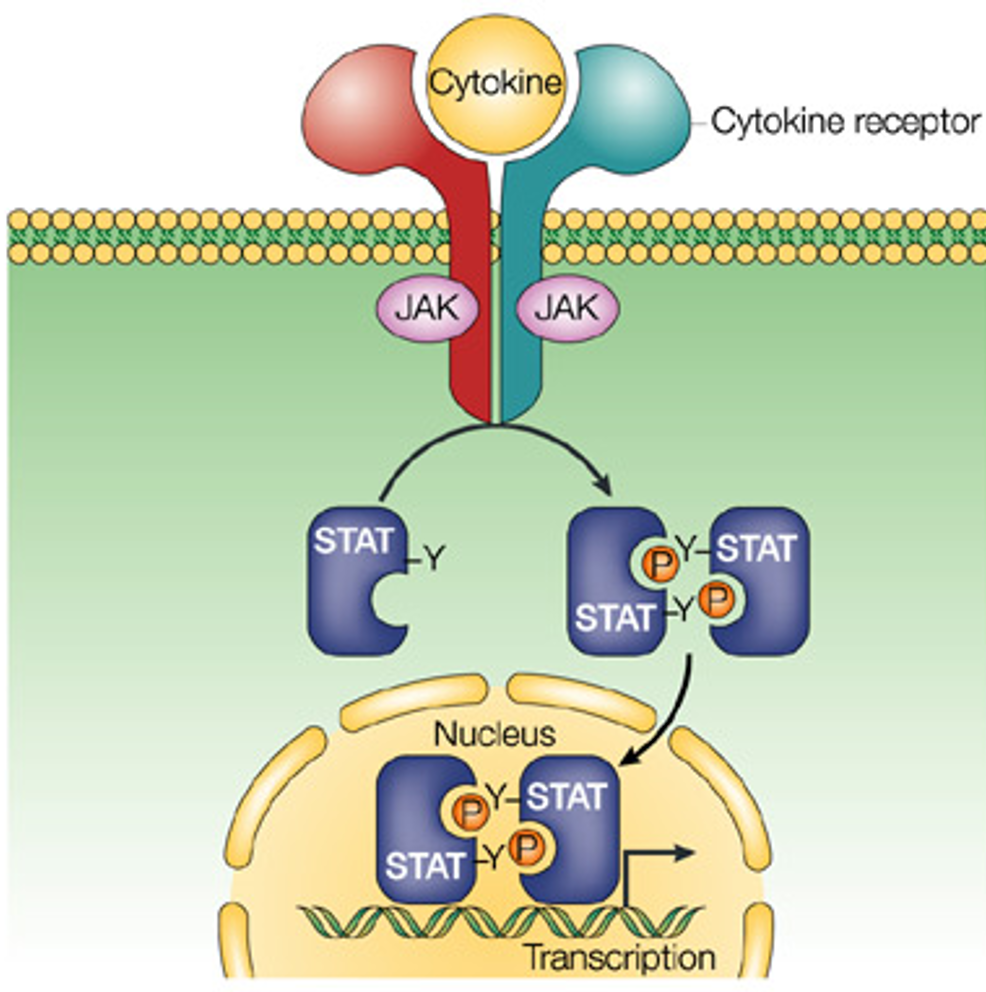
Important protein structure of receptor
JAK/STAT-contains SH2 domains which allows them to bind to phosphorylated tyrosines
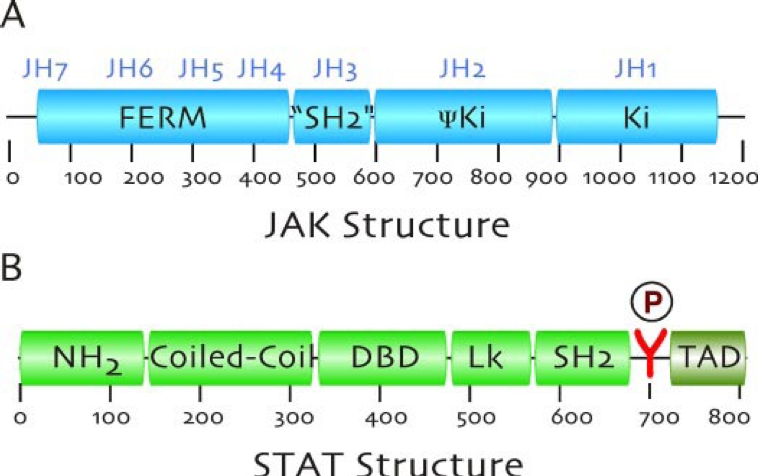
protein tyrosine phosphatases (PTP)
-de-phosphorylate JAK and STAT (end pathway activation)
JAK: SHP-1, SHP-2, PTP1B, CD45, TC-PTP, PTP-BL
STAT: SHP-2, PTP1B, TC45
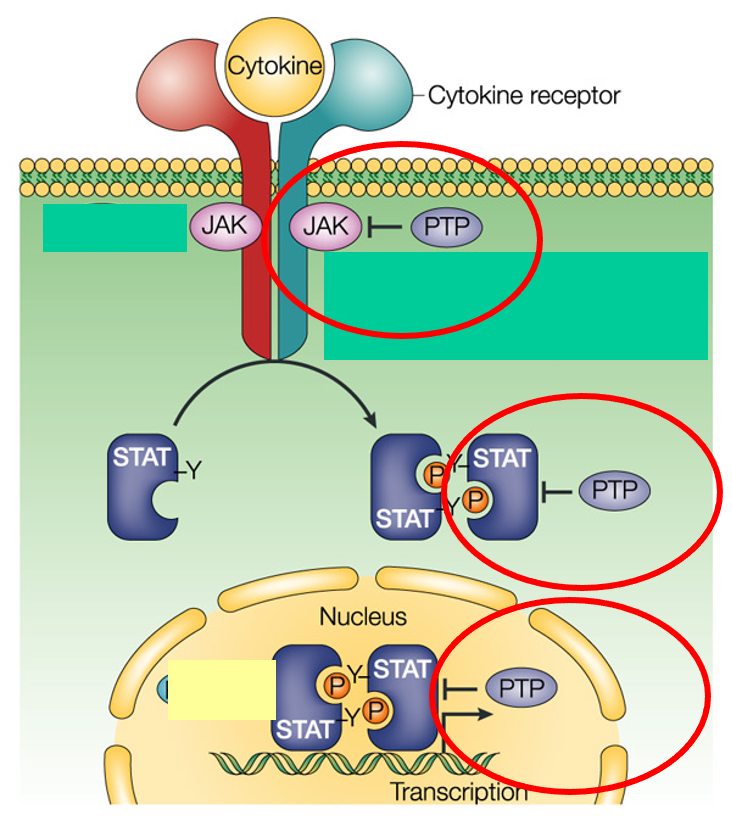
Suppressors of cytokine signaling (SOCS)
-proteins synthesized in response to receptor signaling and induced gene transcription
-SOCS 1-7, CIS
Structure:

SOCS mechanism of action
1.Competes for docking site on receptor by binding at phosphorylated tyrosines and blocking STAT recruitment. This does not alter JAK activity (CIS)
2.Binds directly to JAK and inhibits kinase activity (SOCS1)
3.Bind directly to receptor and inhibit JAK (SOCS3)
4.Facilitates ubiquintination of JAKs
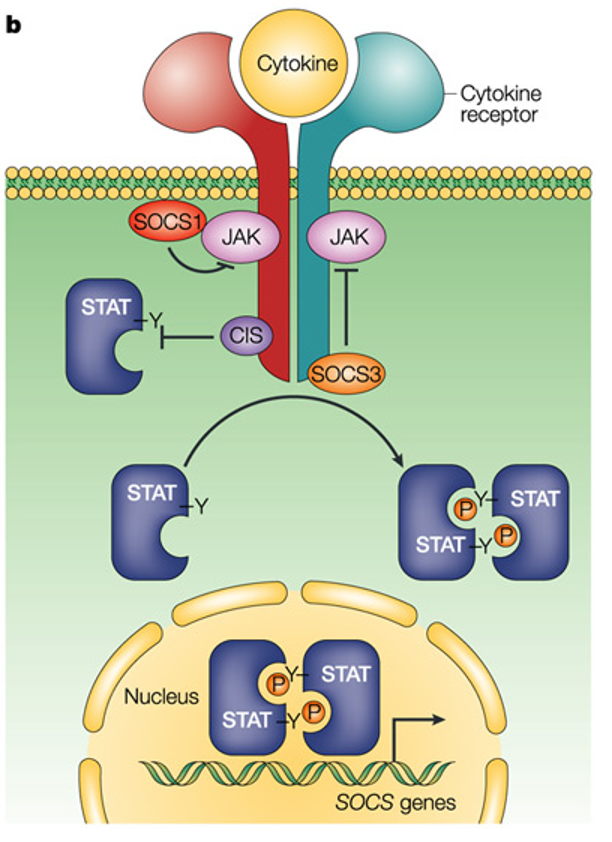
Protein inhibitors of activated STATS (PIAS)
vPIAS1, PIAS3, PIASx, PIASy
vBind activated STAT dimers and prevent them from binding DNA
vStructure: contain a SAP binding domain, A RING finger domain, and a serine/threonine rich domainn
PIAS Mechanism of action
vInhibit STAT binding to DNA (PIAS1/3)
-PIASX and PIASY thought to work possibly by recruitment of histone deactylases (HDACs) and other co-repressor complexes
-May function to modify chromatin or de-acylate STATs themselves
Other proposed mechanisms
-Recruitment of small ubiquitin-related modifier (SUMO) to STAT1
-Biological relevance of sumoylation needs to be clarified and remains controversial

JAKS in SCID
-Severe combined immunodeficiency: No T cells, non-functional B cells, no killer cells
-Mutations in JAK3 or IL2Ry
STATS in cancer
STATS 1, 3, 5 activation in many types of cancers
-transcription factor for cyclins
-promotes expression of anti-apoptopic proteins such as Bcl
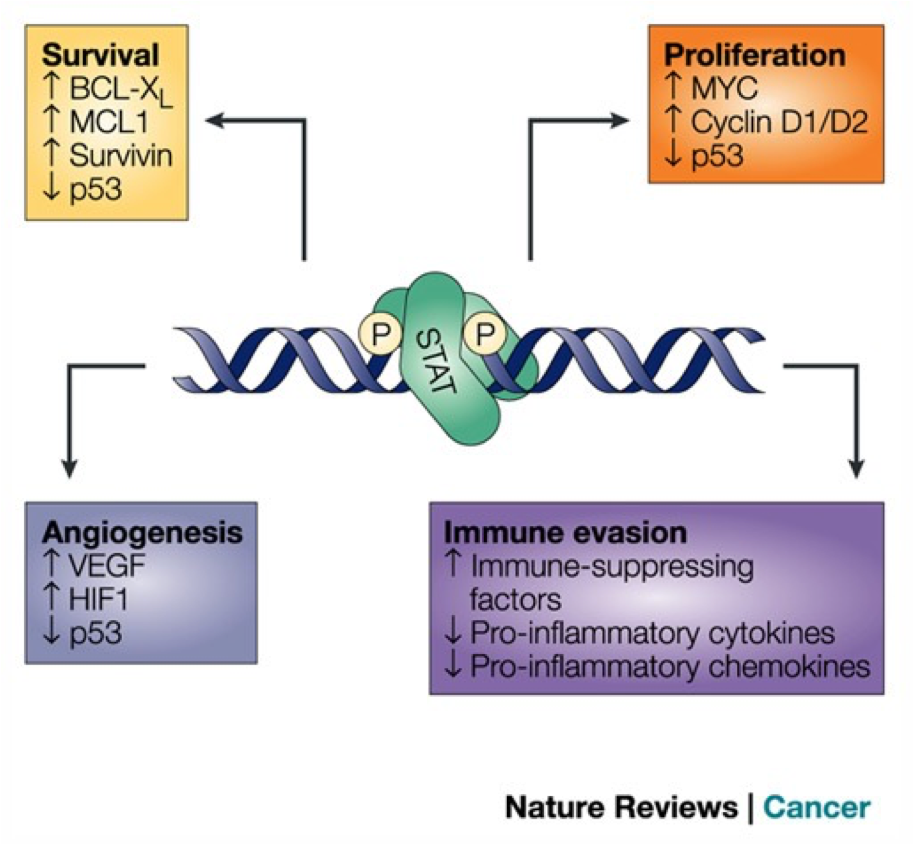
PLC
-acts on PIP2 and generates IP3 and DAG on inner plasma membrane → signaling mediators
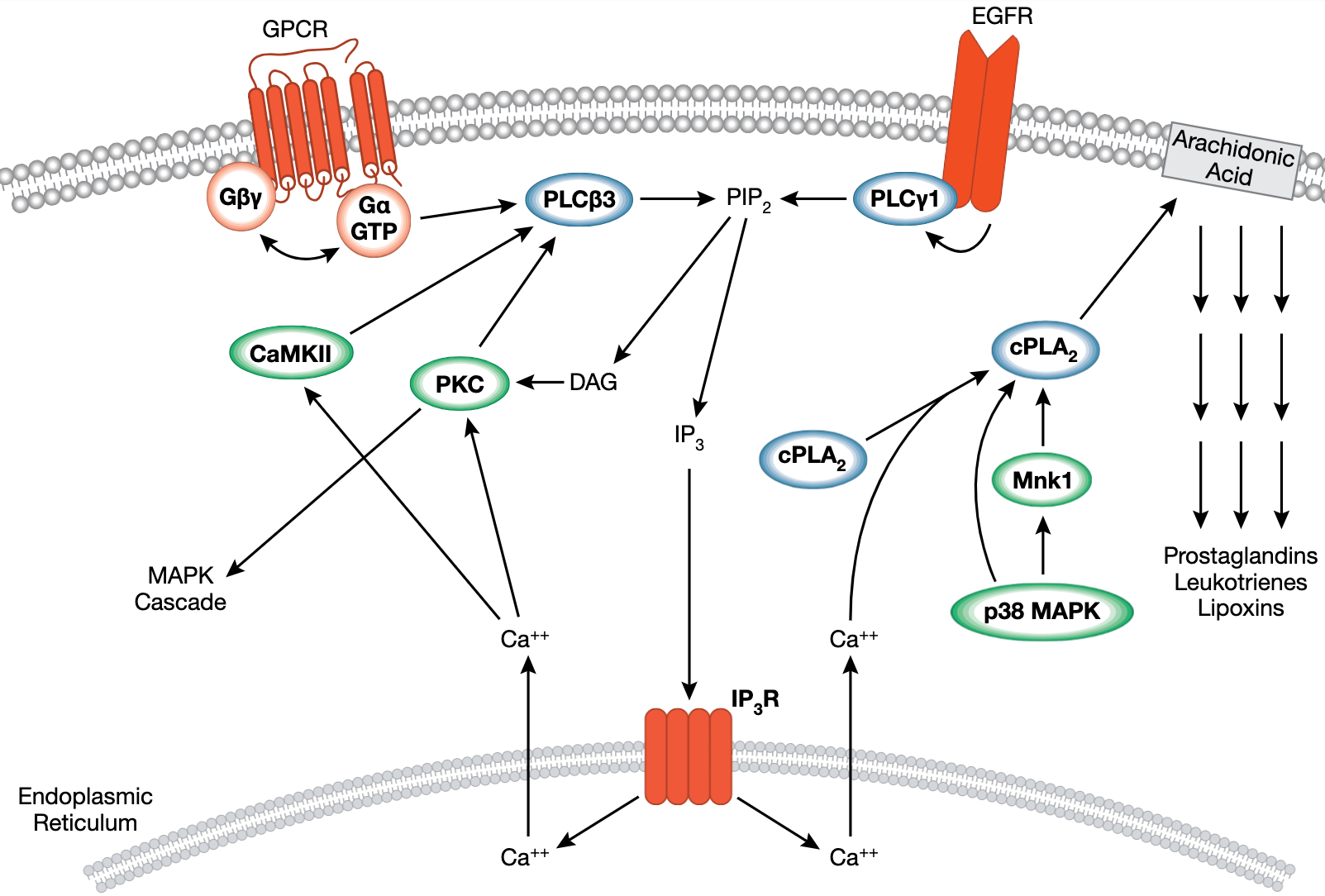
PI3K
-On the plasma membrane
-activated by GPCR and RTK
-PIP3 created by PI3K and is a docking site for many proteins
-Important in cell survival
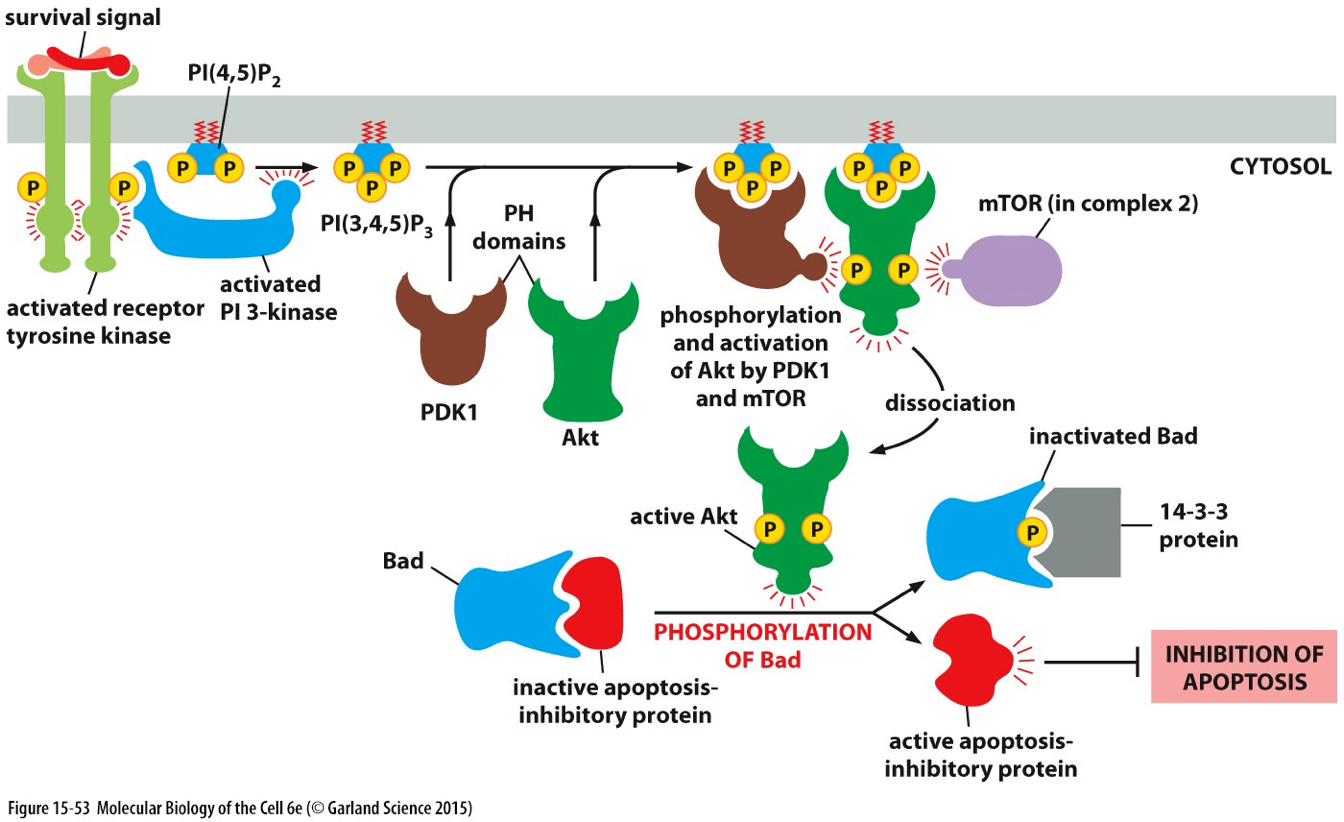
PLC hydrolysis of PIP2 into DAG and IP3
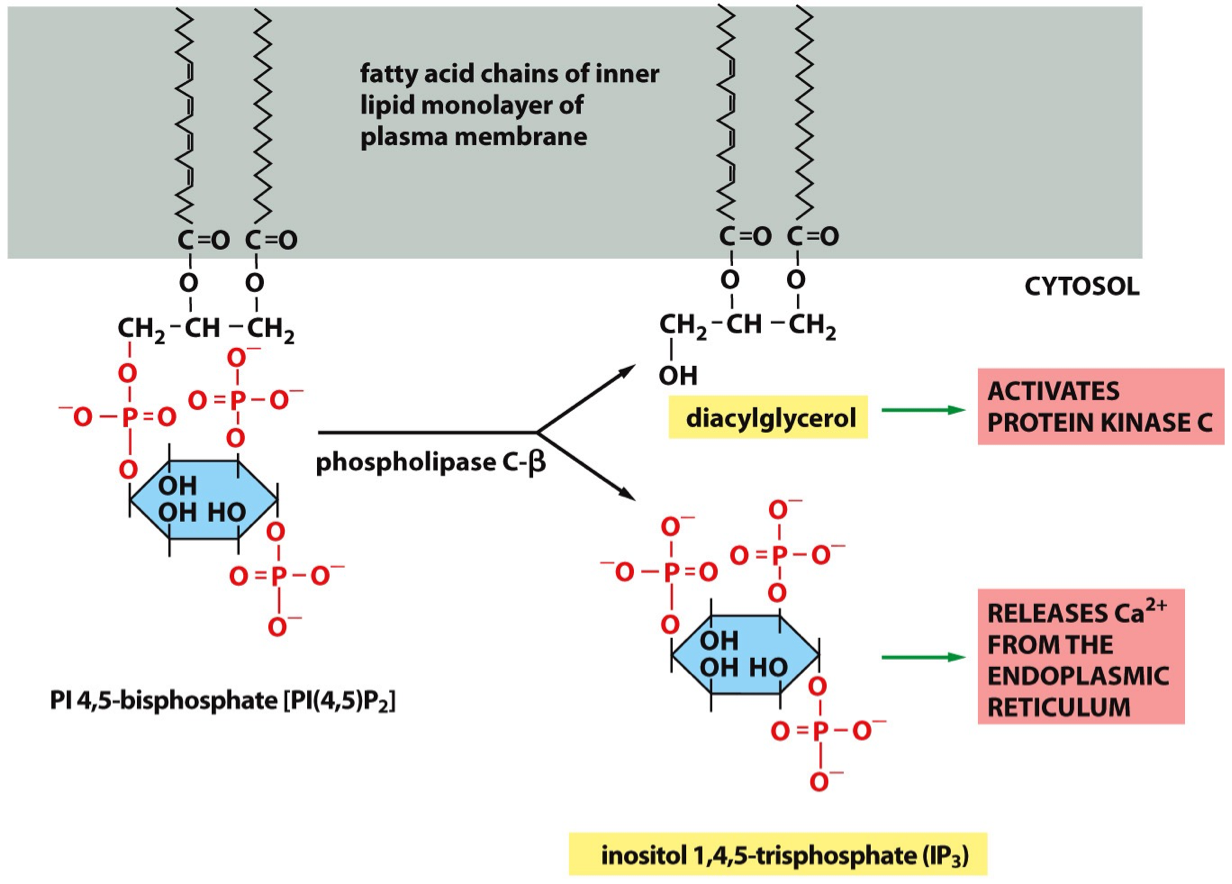
PI3K phosphorylation of PIP2→PIP3
just adding a phosphate by PI 3 kinase
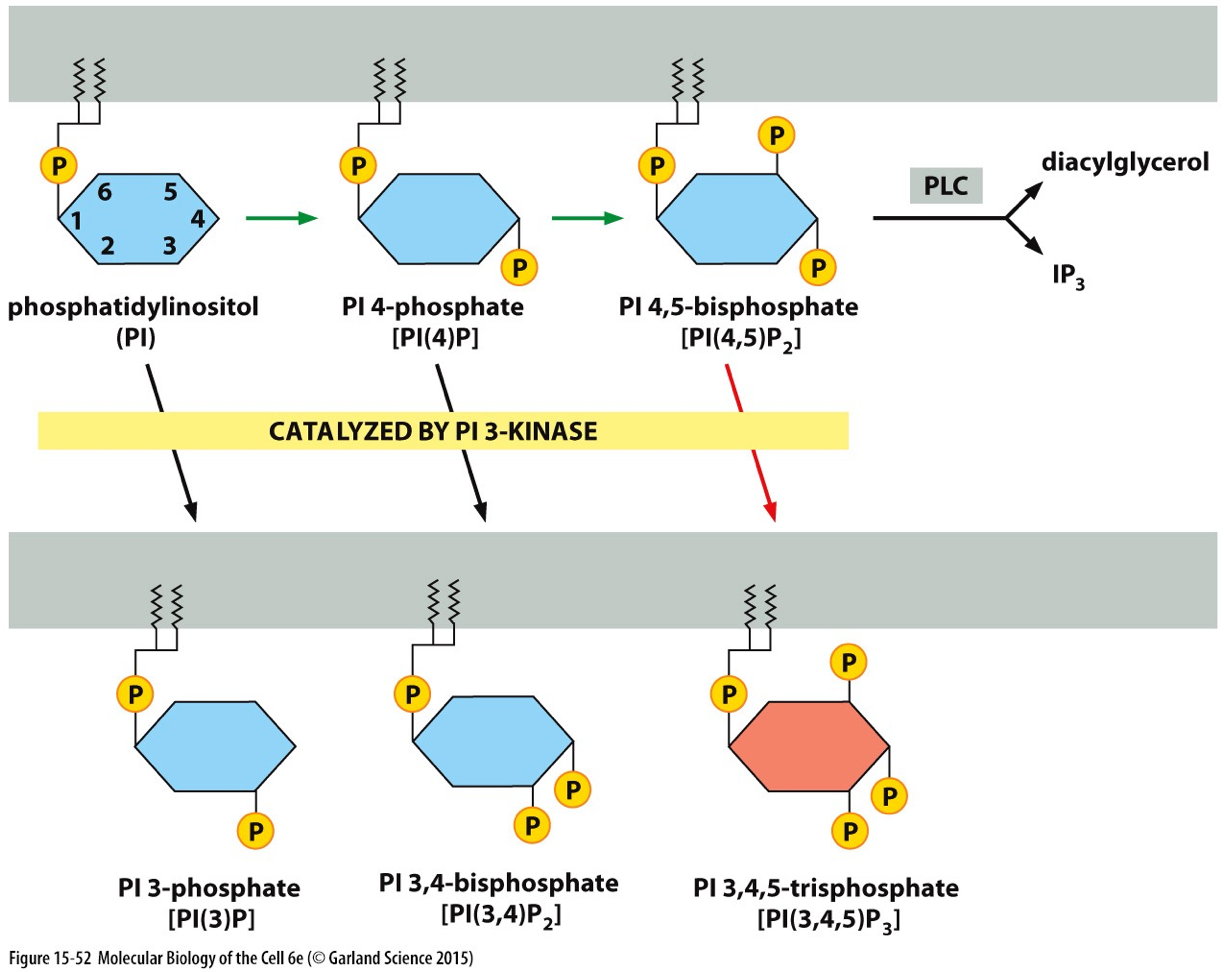
GPCR and RTK parallel pathway

GPCR and RTK parallel pathway pt. 2
